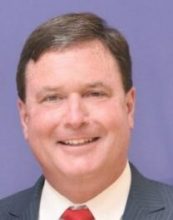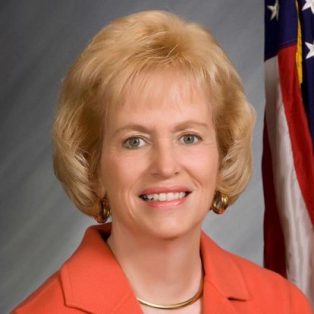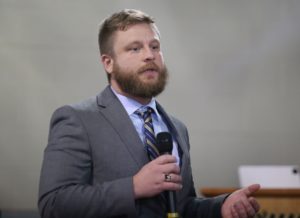IDEM issues ozone Air Quality Action Day for June 29, 2022
The Indiana Department of Environmental Management (IDEM) is declaring an ozone Air Quality Action Day in Southwest Indiana for Wednesday, June 29, 2022.
Who might this affect?
- Kids
- Older adults
- Those with respiratory diseases
Take precautions, such as limiting physical exertion outdoors.
Follow these simple pollution prevention tips to reduce emissions from daily activities:
- Carpool, walk, bike, or use public transportation when possible.
- Refuel vehicles after dusk.
- Avoid excess idling and drive-through windows.
- Consolidate trips and avoid fast-starts.
- Postpone using gasoline-powered garden equipment or mowing the lawn until late evening, when temperatures are cooler.
- Work from home to reduce vehicle emissions, if your employer provides the option.
- Use energy efficient lighting and appliances recommended by the Energy Star Program.
- Turn off appliances and lights when not in use to reduce emissions from energy production.
- Adjust your thermostat by turning it up in the summer and down in the winter to reduce emissions from energy production.
- Recycle to reduce emissions related to producing paper, plastic, glass bottles, aluminum cans, and cardboard.
- Use “low VOC†or “zero VOC†paint and cleaning products.
- Consider burning gas logs instead of wood to reduce smoke.
- Avoid burning clean wood waste such as leaves and brush. If possible, recycle yard waste by shredding or chipping it at home or use a registered collection site. Never burn trash.
Air Quality Discussion
High pressure is over much of the Midwest this morning with very light winds or calm conditions. Mid and high level clouds today from a weak upper level wave pushing in from the west. Precipitation is not possible due to a very dry airmass below these clouds. Surface high pressure over the eastern third of the country will continue tomorrow as winds may be calm all day and sunny with highs in the upper 80’s. Thursday will be hot and highs in the low 90’s with winds turning gently from the south. Georgia Tech, Canadian and NWS ozone models all show high ozone readings for Wednesday.
Todd Rokita Leads Effort To Stop Biden From Assaulting Women’s Equal Opportunities
Transgender Extremism Must Not Be Allowed To Destroy Title IX Protections
Attorney General Todd Rokita is leading an 18-state coalition demanding that President Joe Biden back off plans to demolish protections for women contained in federal law.
Biden is proposing sweeping changes to Title IX of the Education Amendments that would drastically dilute provisions intended to protect women by expanding the law to cover transgender individuals.
“We must follow the science and Hoosier common sense,†Attorney General Rokita said. “Sex is obvious and biological whereas gender is often depicted as something fluid and subjective. To sustain meaningful protections of equal opportunity, we must be guided by the innate immutability of biological sex rather than faddish notions propagated by woke Hollywood, corporate, and media types.â€
Leftists’ portrayals of their Title IX agenda have been dishonest and inaccurate, Attorney General Rokita added.
“Biden’s proposals are far more radical than simply redefining, revising or updating Title IX,†Attorney General Rokita said. “To the contrary, he wants to positively destroy Title IX and the progress it represents for girls and women across the United States.â€
Attorney General Rokita and Montana Attorney General Austin Knudsen have co-led a letter to the Biden administration also signed by 16 other attorneys general.
“Injecting transgender extremism into Title IX would absolutely eviscerate the intended goal of preventing sex discrimination,†Attorney General Rokita said. “This unconscionable action constitutes a frontal assault on equal opportunity for girls and women.â€
On this same principle, Attorney General Rokita is steadfastly defending a new Indiana law that prohibits biological males from competing for spots on girls’ sports teams in K-12 schools. In May, he wrote an op-ed on this topic.
“Women have fought for equality for decades and to receive the same opportunities as men,†Attorney General Rokita said. “Our country seems to have turned its back on these efforts. The pressure to cave is immense as woke corporations, Joe Biden, Hollywood, and cultural elites push their radical gender agenda.â€
Governor Proposes Returning $1 Billion to Hoosier Taxpayers by Vaneta Becker
|
||||||||||||
 |
||||||||||||
|
||||||||||||
Evansville Water And Sewer Utility Opens Bill Relief Program Application To Customers July 1
The Evansville Water and Sewer Utility (EWSU) is launching the Bill Relief Program July 1, 2022, to help income-eligible individuals and families in the community lighten the cost of their utility bill. Customers with a total household income of $50,000 or less may qualify for assistance.
Customers with active city water service who apply for the program and qualify will receive a $3 monthly credit applied to their account each month for one year. The credit offsets the 2022 water rate increase, which will be $2.27 per month effect July 1 (assuming an average monthly water use of 5,000 gallons). After one year, customers may have the opportunity to reapply for the program for an additional 12 months. Dollars not used for the utility bill relief credit will be allocated to provide assistance to income-eligible customer in disconnect status.
Who’s Eligible
Eligibility is based on combined annual household income. EWSU customers with a household income of $50,000 or less may qualify for assistance.
How to Apply
- Visit ewsu.com/BillRelief.
- Fill out the application, including EWSU account number and household income.
- Applicants will receive an email verifying the application was received and whether the request was approved or denied.
Program Funding
Funding for the Bill Relief Program is provided by the American Rescue Plan, which provides direct relief to Americans and the economy during and as a result of the COVID-19 pandemic. The City of Evansville has allocated $4 million in federal funds for up to two years. EWSU is working toward sustaining it as a long-term program, dedicated to offering assistance to individuals and households in greatest need.
Find Out More
To learn more about the Bill Relief Program, visit ewsu.com/ReliefProgram or contact EWSU Customer Service at ewsu.com/contactor by calling 812-436-7846.
Indiana Lifts Water Bill Tax
Also starting in July – unrelated to the EWSU Bill Relief Program – water customers across the state of Indiana will benefit from changes in Indiana utility tax regulations that lift the state tax on water consumption. Beginning July 2022, all EWSU customers will see a decrease in rates and charges on their utility bill. This reduction comes from the amendment to the Public Service Commission Act, submitted by the Indiana Utility Regulatory Commission and passed by the Indiana State Legislature in April 2022. A residential customer who uses an average of 5,000 gallons of water per month will see a $0.46 decrease in their bill each month.
PUBLIC HEALTH COMMISSION TO MEET JUNE 30
|
SENATE CANDIDATE JAMES SCENIAK’S STATEMENT ON THE SUPREME COURT’S DECISION IN “DOBBS v. JACKSON”
My plan on reducing abortions in America:
Supporting adoption: Personally, I have witnessed the great miracle of adoption. Two of my siblings are adopted. As a nation, we need to support adoptive families which includes substantial tax breaks and subsidizing the cost of adoption.
Supporting foster care: This is another blessing that I have been a part of first-hand. In my home, I supported two foster nephews. As a society, we need to support those in the foster system. We need to support the children first, but also support foster families and case workers. I have witnessed the emotional toll on case workers. We as a society need to support those who are working to ensure America’s children are in supportive and loving homes.
Ensuring economic opportunity for all: Abortions have increased numbers in communities that have economic strife. We need to ensure that every individual has the opportunity and freedom to pursue happiness and meaningful life. We do this by ensuring that good economic practices are the standard in Washington, including fighting inflation, waste and reduction of taxes that have become burdensome for American families
Safe sexual practices and contraception options: Ensure we educate young men and woman safe practices within sex. Regular medical checkups, using contraception, giving more options for male and female birth control, and educating about sexually transmitted diseases. We need to increase contraception options for both males and females by removing the government’s over regulatory process within this specific issue.
Our politicians employ emotional issues to divide us so we will, in return, increase the power of the governing body. If you are angry at the injustice of how our government has handled this situation, then good, you want change.
We should direct that anger to a system that has failed both women and preservation of life by using meaningless rhetoric to divide us instead of solutions that bring significant culture change and encourage grace, preservation of life and humanity in our society.
FOOTNOTE: Â POSTED BY THE CITY-COUNTY OBSERVER WITHOUT BIAS OR EDITING.











